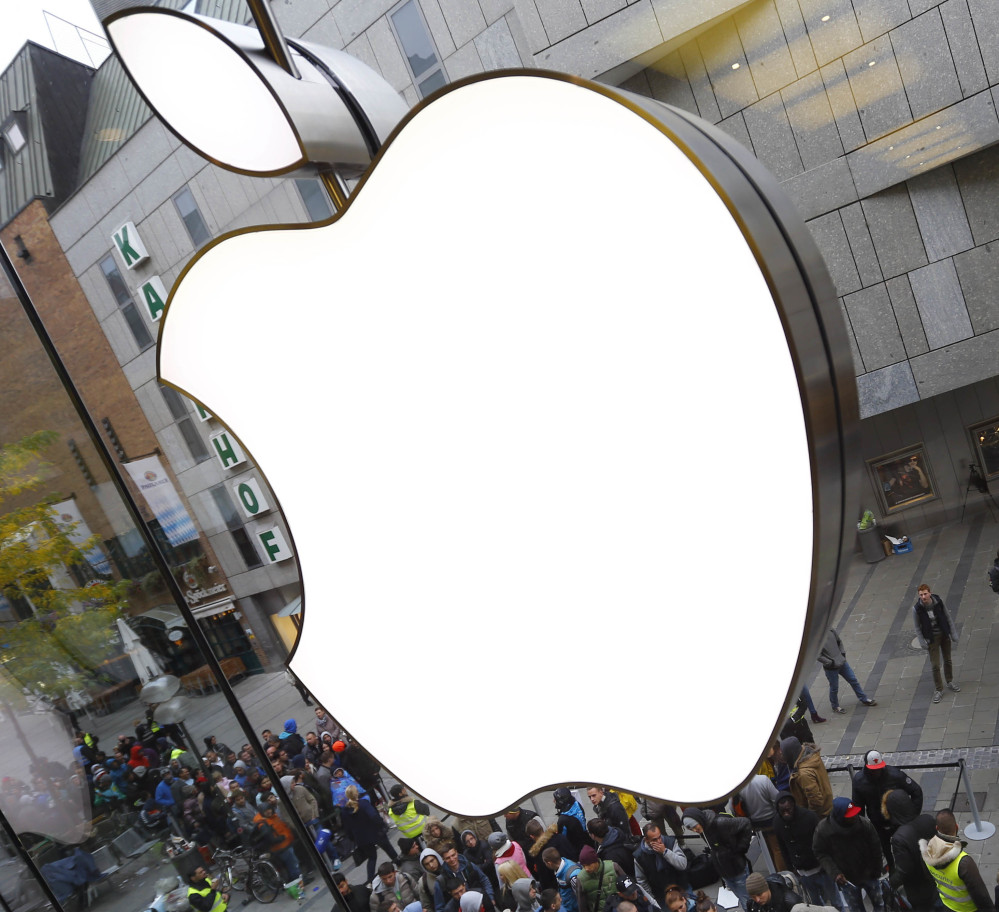Apple shares fell sharply, as the firm reported that its revenue had dropped from the same period last year – the first time that’s happened since 2003.
Wall Street analysts expected the firm to report lower numbers this quarter. So had Apple itself, which said in its own guidance numbers last quarter that it expected to see the dip in sales. Sales of the company’s latest smartphones, while significant with 51.2 million models sold, still could not keep pace with sales of 61.2 million from the same period last year. This is the first time iPhone sales have dropped year-over-year since its debut in 2007. Because the iPhone accounts for more than two-thirds – in fact, nearly 70 percent – of Apple’s revenue, a slowdown in iPhone sales is significant.
Analysts had predicted that Apple would sell 50.5 million iPhones and post $52 billion in revenue.
Overall, Apple reported $50.6 billion in revenue and $10.5 billion in profit. Last year at the same time, the company reported $13.6 billion in profit on $58 billion in revenue.
Shares dropped 6 percent after the report, having closed at $104.35.
What happened? One factor is that last year’s spring quarter saw unusually high sales for Apple. Supply problems for the iPhone 6 and iPhone 6 Plus moved back sales that normally would have been counted in the company’s traditionally strong holiday quarter.
But another, far more troubling reason is that Apple – along with the rest of the smartphone industry – is seeing a serious slowdown in the number of people buying new smartphones. For years, analysts have warned that the smartphone market is becoming saturated, meaning that most people who would want to buy a smartphone already have one.
“Our team executed extremely well in the face of strong macroeconomic headwinds,” said Tim Cook, Apple’s chief executive in a press release. “We are very happy with the continued strong growth in revenue from services, thanks to the incredible strength of the Apple ecosystem and our growing base of over one billion active devices.”
Analysts do expect that iPhone sales will recover after the company introduces this year’s expected model of the iPhone. The next version, if Apple keeps up with its traditional product cycle, should be the iPhone 7 and see major hardware makeover. Reports based on apparent weak links in Apple’s supply chain indicate that the new phone could have a new kind of headphone port, be dust-proof and waterproof and may even sport a totally redesigned home button.
This quarter’s earnings report, however, does demonstrate that it’s critically important for Apple to deliver new innovative products and find new ways to generate revenue as the smartphone becomes more of a commodity worldwide. The company’s interests in media and entertainment, smart home devices and healthcare – as well as persistent rumors of an Apple-designed car – all show the company is hard at work to find and dominate the next revolution.
“The industry is in a lull between the mobile boom and what comes next in automotive, the connected home, health and industrial applications of the Internet of things,” said Geoff Blaber, a vice president at CCS Insight, in a note ahead of the report. “Pressure is likely to mount on Apple to reveal the next big source of growth.”
Apple also announced it will expand its capital return program, adding up to $50 billion to the cash it’s set aside to return capital to shareholders; that means Apple is planning to spend a total of $250 billion in cash this way by the end of March 2018.
Send questions/comments to the editors.



Success. Please wait for the page to reload. If the page does not reload within 5 seconds, please refresh the page.
Enter your email and password to access comments.
Hi, to comment on stories you must . This profile is in addition to your subscription and website login.
Already have a commenting profile? .
Invalid username/password.
Please check your email to confirm and complete your registration.
Only subscribers are eligible to post comments. Please subscribe or login first for digital access. Here’s why.
Use the form below to reset your password. When you've submitted your account email, we will send an email with a reset code.